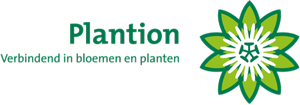Sorting codes
Flowers and plants exist in countless different forms and stages. They can vary in terms of shape, volume and ripeness and other aspects. To keep trade in plants and flowers transparent despite this diversity, the products are sorted into uniform batches with the same characteristics. Each characteristic has a code. These codes are presented in the sorting code. This allows growers, auctions and purchasing traders to quickly see what product is being traded.
The sorting code provides information with the product on a limited number of characteristics that determine sales. For cut flowers, the sorting code provides information on the stem length, weight and other sorting characteristics. For house plants and garden plants, the sorting code provides information on the pot size, height or diameter of the plant, the number of plants or cuttings per pot and other characteristics, such as the ripeness or thickness of the product.
The most common sorting codes for cut flowers, house plants and garden plants are available as a download on the Floricode website. An overview of the definitions of the existing sorting codes can be downloaded here.
Characteristic codes
In addition to the product name, many other aspects of the product are important in trading plants and flowers. A clear description of those aspects is necessary, particularly as the transaction becomes further disconnected from the physical stream of products. Characteristic codes can be used for this purpose. Characteristic codes each describe a certain aspect of the product. Distinctions include sorting characteristics, botanical characteristics (including flower color), quality characteristics (with inspection codes) and logistical characteristics (e.g. with container codes).
Each characteristic is identified by its own characteristic type number. The codes can be used in communication about the product between supplier and client, including trading by intermediation or via a supply bank.
Inspection codes
There are agreements between growers and traders on the quality of the products presented for trading at the auction. These agreements refer to product quality, assortment, packaging and information on the product. The agreements are set out in the VBN product specifications. If the product deviates from the agreements, an inspection code will be applied to the product. The deviation can be negative or positive, so there are negative as well as positive inspection codes.
A list of inspection codes can be found here. The most recent modifications to inspection coding can be found in the overview of changes to the characteristic codes.
Negative inspection code
Negative inspection codes consist of three digits. There are two codes for each deviation: an even-numbered code in the case of minor deviation and an odd-numbered code in the case of a serious deviation. The codes are listed in numerical order, then ordered by subject:
codes beginning with 1: flower
codes beginning with 2: internal quality
codes beginning with 4: branch/stem/trunk
codes beginning with 5: leaf
codes beginning with 6: parasites
codes beginning with 7: packaging
codes beginning with 8: sorting
codes beginning with 9: other
Positive inspection code
There are two types of positive inspection codes: one code referring to phytosanitary aspects and another for general quality aspects. There is also a third positive inspection code, containing auction-specific information.
Group codes
Statistical information is also recorded using the VBN product code, so that supply, price and turnover can be monitored accurately. Products are grouped into product groups to do this, each with their own VBN group code. The lists of group codes can be found here.
Packaging catalogue
With the packaging catalogue, it is easy to find all the information you need about Royal FloraHolland’s standardized transport packaging. View the packaging catalogue.
POS codes
Pos codes.
Country codes
For the accuracy of statistics issued by the VBN or the auctions, a country code is linked to the country of origin of products supplied. The country code list should not be confused with the S62 list used for electronic messages. This list includes all country codes according to ISO directives. In practice, only part of this long list of codes is actually used. The country code list is administered for the auctions by the VBN. The ISO list is modified when new countries emerge and are assigned a new country code by the Netherlands Standardization Institute (NEN) or when there is a need on the part of the auction for a distinction not yet officially made by the NEN. In that case, a temporary code is created.
Color codes
Plants and flowers are characterized by color. Different classifications and codes are used to communicate about color. The color table presents them in their context. You can find the color table here.
On registration, the color is objectively established using a color sample chart issued by the Royal Horticultural Society (RHS). Each color is indicated by a code, the RHS color code. Each code corresponds to a description. In Plantscope®, the shared database and image archive for floricultural varieties, this color description is given for each product, along with the RHS code. The RHS code corresponds to VBN characteristics B03 and B04 for the main and secondary colors of the flower, respectively. The RHS code is a very detailed means of naming the color, so floricultural auctions also use a higher-level color classification: color codes B01 and B02 (for the main and secondary colors, respectively).
You can use the search engine on the Floricode or VBN website to find the different codes with their description. You can search by product code or product name. If you want to receive the codes as a file, you can contact Floricode. Downloading of the code lists is only available for subscribers.



